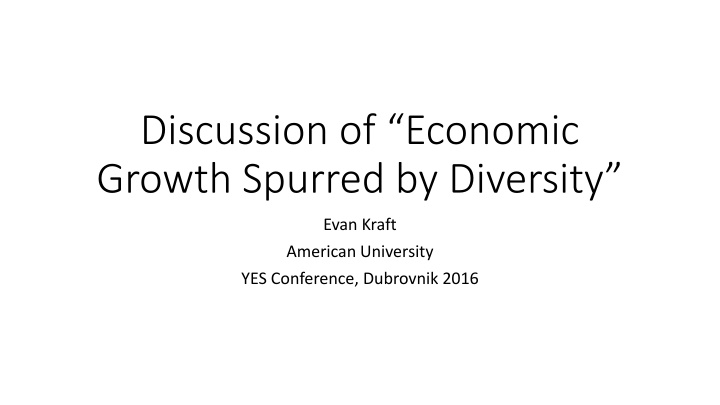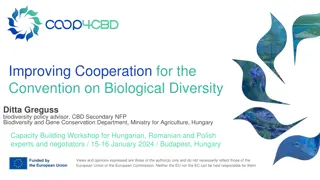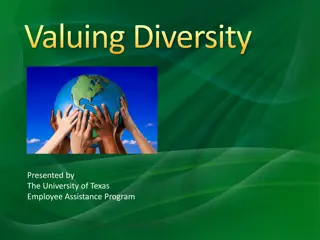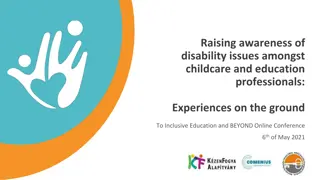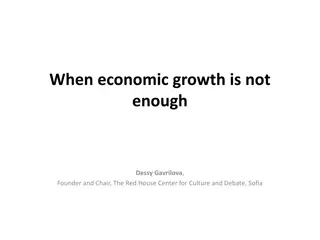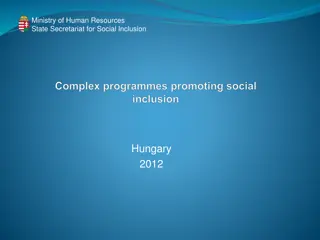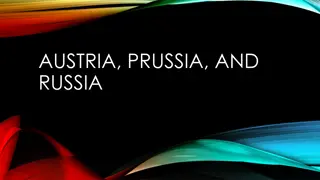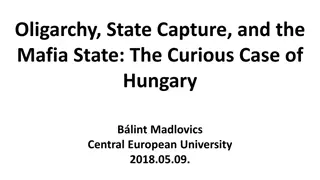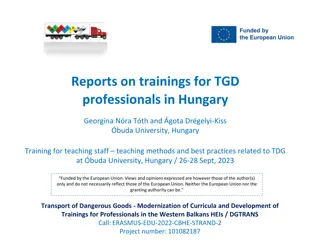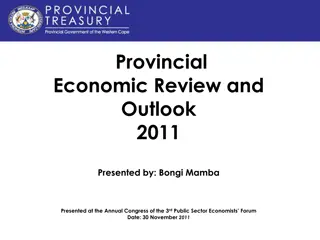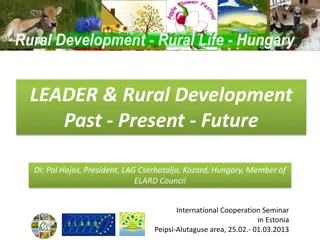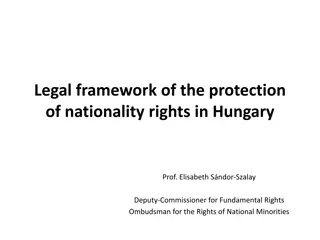Economic Growth and Diversity: Insights from Hapsburg Hungary
Through data analysis of 1700 Hungarian towns from 1880-2010, this study explores how social diversity impacts economic growth, considering factors like ethnic identification, language, and religion amid the late Hapsburg ethnic conflicts. It discusses the findings of increased communication and cooperation within groups but decreased interaction between them, shedding light on the intricate dynamics of diversity and economic development.
Download Presentation

Please find below an Image/Link to download the presentation.
The content on the website is provided AS IS for your information and personal use only. It may not be sold, licensed, or shared on other websites without obtaining consent from the author.If you encounter any issues during the download, it is possible that the publisher has removed the file from their server.
You are allowed to download the files provided on this website for personal or commercial use, subject to the condition that they are used lawfully. All files are the property of their respective owners.
The content on the website is provided AS IS for your information and personal use only. It may not be sold, licensed, or shared on other websites without obtaining consent from the author.
E N D
Presentation Transcript
Discussion of Economic Growth Spurred by Diversity Evan Kraft American University YES Conference, Dubrovnik 2016
Wonderful data, intriguing hypothesis Author collects data on 1700 towns in the Hungarian part of the Dual Monarchy for 1880-2010 Defining town economic growth as growth in the tax base, he runs regressions including geographic and demographic determinants of tax base growth between 1880 and 1910 He also collects data on a promising instrument, the number of war incidents close to the towns in the period of major conflict between Ottoman and Christian forces 1500-1800 Hypothesis that social diversity spurs economic growth is tested
A note on the literature Most of the studies finding negative effects of diversity are cross- country studies They may be picking up large scale group conflicts, ones that at least at times lead to severe conflicts up to civil war Show consequences of fractionalization for public good provision Most of the studies showing positive effects are either city-level or firm-level They are picking up the fact that diversity brings more to the table both in terms of city amenities and in terms of firm-level human capital
What are the most relevant group demarcations? The literature points to characteristics that increase communication and cooperation within groups while decreasing the same between groups Ethnic identification Language Religion These dimensions can be highly correlated statistically This paper uses ethnicity and religion, but I wonder about language as useful Important to note that group identification can be endogenous. People change ethnic identification or religion to gain privileges or escape persecution.
The late Hapsburg ethnic conflict The period studied was characterized by increased political and economic conflict among groups Although Hungarians gained a major victory with the establishment of the Dual Monarchy in 1867, the struggle for greater political representation and control of local institutions seems to have intensified thereafter Schulze and Wolfe (2012) document the economic effects of these political conflicts, showing that grain prices between towns dominated by the same ethnic group converged more than between towns dominated by different groups
Question How might the findings in the paper be affected by these conflicts? Could more diverse towns have more trading partners? Could they have greater market integration in general because of this?
Migration and changes in diversity 1880-1910 Some evidence of shifts in ethnic diversity in the appendix scatter plots. This could be due to changes in group identification, migration, or differential birth and death rates
Anther explanation of the success of diversity? Paper proposes only one explanation, but others could be considered Could ethnic diversity itself be explained by political attitudes of local authorities? Greater respect for religious rights could be correlated with greater economic freedoms Although the legal framework of the Empire is uniform, how much variation is there in law enforcement, and toleration of difference? Jewish Communities and City Growth in Pre-Industrial Europe Johnson and Koyama 2016 find that cities with larger relative Jewish populations grew more rapidy than others. Similar questions arise.
Education The paper presents evidence that occupations and ethnicities are often correlated. What was the role of education and training in providing opportunities for those not in the groups traditionally associated with occupations to gain qualifications? Could educational quality have systematically been correlated with diversity?
Kudos Wonderful data work, creative thinking, rich findings
